RIES: Contributing to the advancement of life and energy sciences through an interdisciplinary approach
Research Highlight | May 10, 2021
Seventy-eight years have passed since the establishment of the Research Institute of Ultrashort Waves in 1943. The seed planted on that day has grown into what is currently known as the Research Institute for Electronic Science (RIES) of Hokkaido University. The institute has blossomed and produced achievements in the creation of knowledge.
The mid-term evaluation conducted by Japan’s Ministry of Education, Culture, Sports, Science, and Technology (MEXT) granted RIES the highest grade on a five-point grading scale. In this accomplishment, three key members of RIES joined in the following discussion, reminiscing the institute’s progress, past achievements, and attention shift towards interdisciplinary and sharing their hopes.
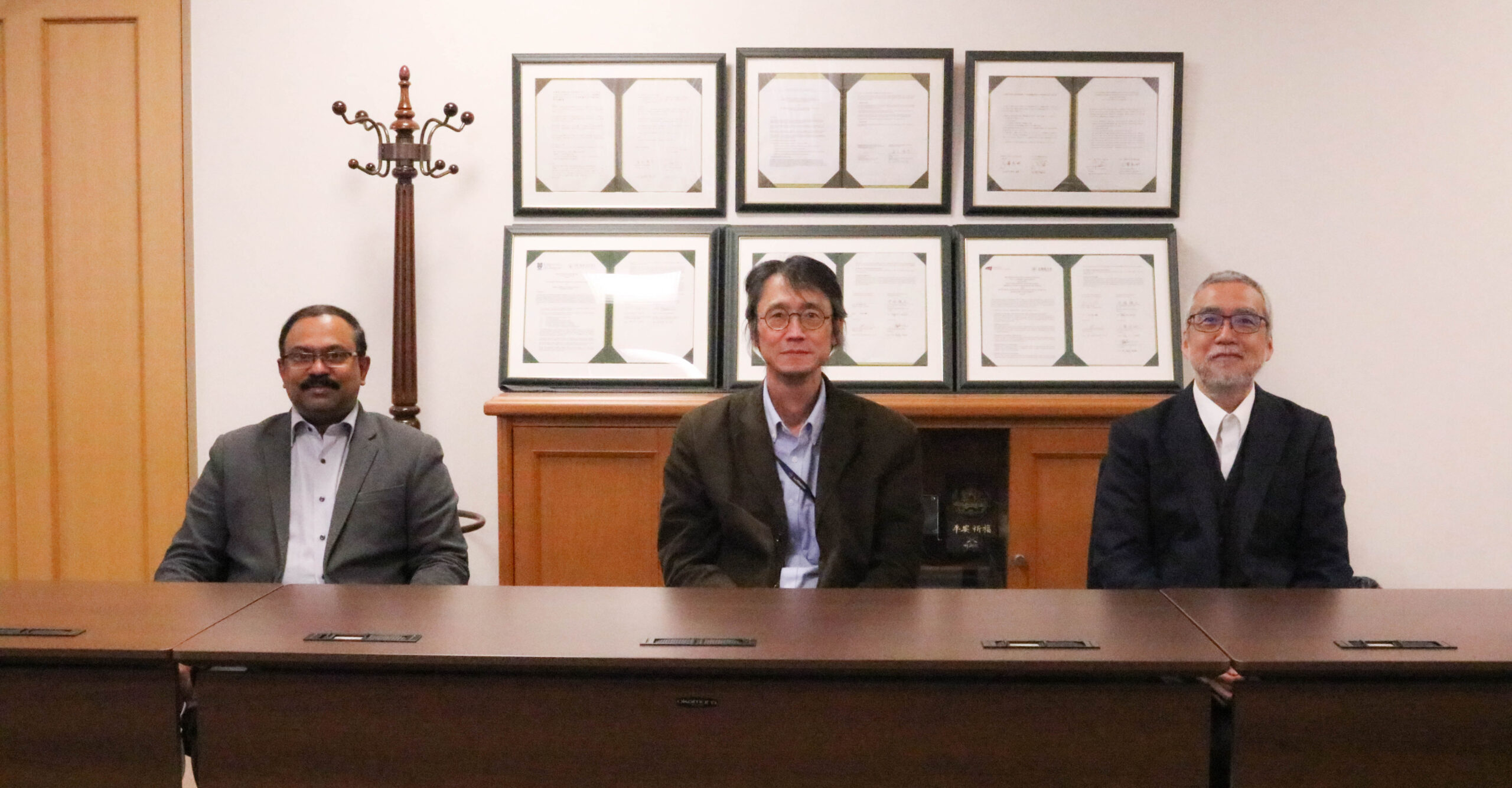
From left to right: Professor Vasudevan Pillai Biju, Director of Promotion Office for International Alliance of RIES; Professor Kuniharu Ijiro, Director of RIES; Professor Toshiyuki Nakagaki, the former Director of RIES.
Towards the expansion of interdisciplinary research
Nakagaki : Professor Kou Minoshima, the key person behind the establishment of the Research Institute of Ultrashort Waves and its first director, had the vision to combine different disciplines of science that could contribute to advancements in the medical field.
Biju : He did indeed. Importantly, I found out that the interdisciplinary approach had become more effective after the institute’s reorganization into the Research Institute of Applied Electricity in 1949. Eventually, it led to cutting-edge research on electronics, physics, chemistry, medicine-physiology, and mathematics. Those were nonetheless the fundamental disciplines, and each started crossing the boundaries for the advancement of medical technology.
Ijiro : That was a crucial time for the institute’s development. Those disciplines are still more or less reflected in the institute’s current five sections that we refer to as pillars. The values of these pillars are reflected in the laboratories; each has unique characteristics.
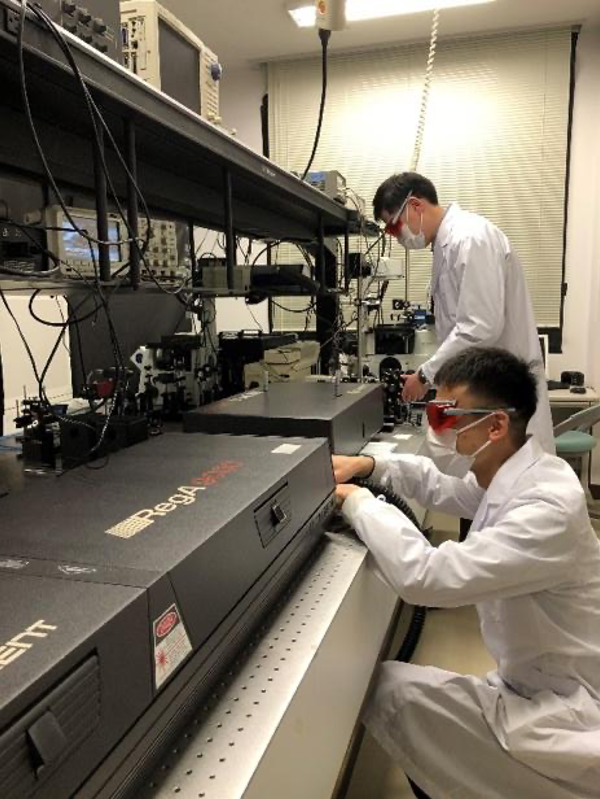
RIES consists of five sections: “Photonics and Optical Science,” “Material and Molecular Sciences,” “Biology and Life Sciences,” “Research Center of Mathematics for Social Creativity,” and “Green Nanotechnology Research Center.” (Photo by RIES)
Biju : All laboratories value integrative cooperation by combining multiple fields. So, strictly speaking, the focus of RIES is not limited to pure electronic sciences, despite the name. Instead, fundamental science disciplines form the basis of our interdisciplinary activities.
Nakagaki : Of course, the word “electronic” may possess an engineering connotation. But electronic sciences have a more expansive interpretation. We are trying to build a new frontier of an interdisciplinary subject that correlates the five pillars under the electronic science title. I believe that the measures to promote diversity in the discipline, instead of just focusing on a particular research area, make RIES unique.
Ijiro : Yes, although each laboratory has its focus, interlaboratory and interdivisional collaborations are always active and highly encouraged.
Keeping abreast of the times and scientific trend
Nakagaki : Around 20 years ago, Bill Clinton, the former president of the US, described nanoscience as the dark horse of technological development. We have been trying to keep in line with this trend.
Ijiro : That is true. He particularly stressed the fact that the bioinformatics and IT field had been leading, especially in the US in the late 20th century, whereas the potential of nanoscience had been underestimated. The word “nano” means “very small”, so all that has nano — nanophotonics, nanomaterials — are studies on small subjects. The current landscape shows that the focus on this field is growing, not only in Japan but worldwide.
Biju : In retrospect, we could see that a “deviation” from the institute’s name in fact reflected RIES’ ambitions in global nanoscience and nanotechnology trends. The institute’s focus shift to the nano arena began nearly two decades ago.
Nakagaki : As a result of the growing interest in investing in these novel disciplines, we have joined some cooperative initiatives. One of which is the Five-Star Alliance, initiated by the Institute of Multidisciplinary Research for Advanced Materials (IMRAM) of Tohoku University, connecting among RIES, IMRAM, the Laboratory for Chemistry and Life Science (LCLS) of Tokyo Institute of Technology, the Institute of Scientific and Industrial Research (ISIR) of Osaka University, and the Institute for Materials Chemistry and Engineering (IMCE) of Kyushu University. We have joined the Open Innovation Bridging Human, Environment, and Materials.
Ijiro : Some of our affiliated researchers have produced remarkable discoveries. For example, the Ig Nobel Prize was awarded twice to Prof. Nakagaki for his research using slime molds: the “Ig Nobel Cognitive Science Prize” in 2008 and the “Ig Nobel Transportation Planning Award” in 2010. There are more examples of outstanding research activities.
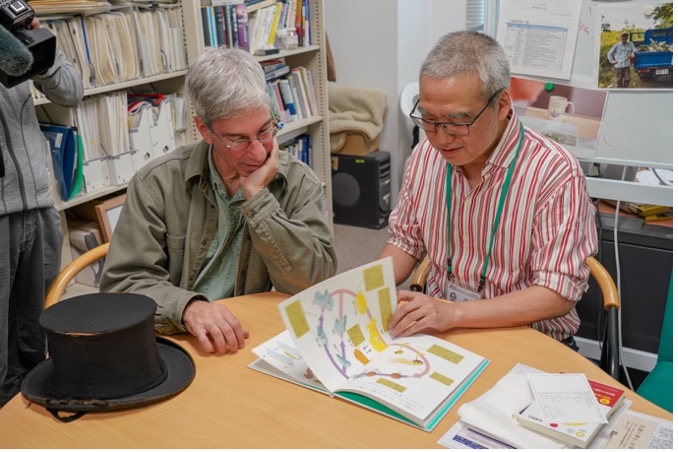
The Ig Nobel Prize founder (left), Marc Abrahams, and Prof. Nakagaki during Abrahams’ visit to the institute in 2018.
Biju : Two other examples are Prof. Hiroaki Misawa, who received the Japanese Chemical Society Award, and Prof. Hiromichi Ohta, who develops thermoelectric devices. Indeed, there are quite a large number and variety. I find them all unique and outstanding in their field of study.
Nakagaki : Suffice to say, our activities are dedicated to deal with the ongoing global issues, namely energy and environmental problems, through the innovations in new material and new technology.
Biju : If I may, I would like to add that one of our core projects focuses on a cancer-related research network, such as examining the behavior of cancer cells in their tumor microenvironments. So, our institute is working to solve critical issues that are closely related to human life.
Collaborations through diversity and internationalization
Nakagaki : Our researchers have been supported by the collaborations that supplied us with special facilities. One such facility is the Nikon Imaging Center at Hokkaido University (NIC@HU), a joint center that welcomes all researchers in Japan to use it.
Biju : NIC@HU certainly provides the cutting-edge equipment to acquire high-resolution cell and tissue images. Also, this facility offers imaging and analytical software to interpret any data regardless of the data size.
Nakagaki : Not to mention, it promotes good networking opportunities.
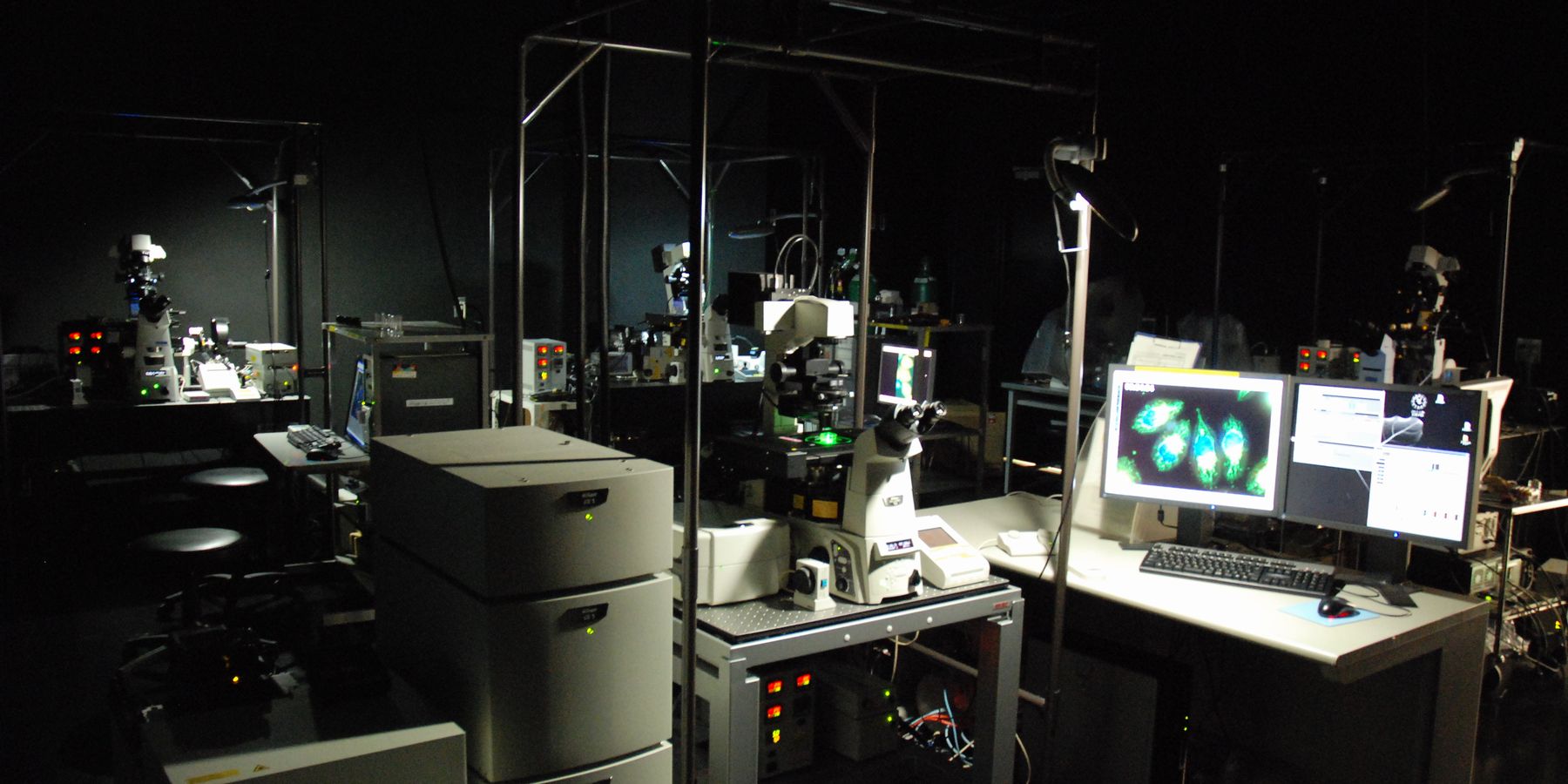
Nikon Imaging Center at Hokkaido University (NIC@HU) is a result of collaboration between Nikon Instec (Nikon Solutions Co., Ltd.) and Hokkaido University, supported by many companies. There are ten such centers worldwide. (Photo: NIC@HU)
Ijiro : Beyond any doubt, networking is important for RIES, considering diversity a key to being interdisciplinary. Each faculty member of RIES is also affiliated with a graduate school from where our students come. The diverse research backgrounds and affiliations help us generate interdisciplinary and multidisciplinary research perspectives.
Biju : Speaking of students and diversity, we also have both research and full-time students from different departments who come from various countries. We are aiming to be an inclusive institute with an international outlook.
Nakagaki : Exactly. The international students even make up almost one-half of the students in the institute. Further, the foreign faculty members who make up roughly 20% out of the total underscore the global outlook of the institute. Around 45% of the faculty members are less than 40 years old.
Biju : The attempt of internationalization has been promoted even before Prof. Nakagaki’s era. The previous directors signed several MoUs to collaborate with universities and research institutes from various countries. The Promotion Office for International Alliance and the Five-Star Alliance increase the international visibility of the institute through research exchanges and international events.
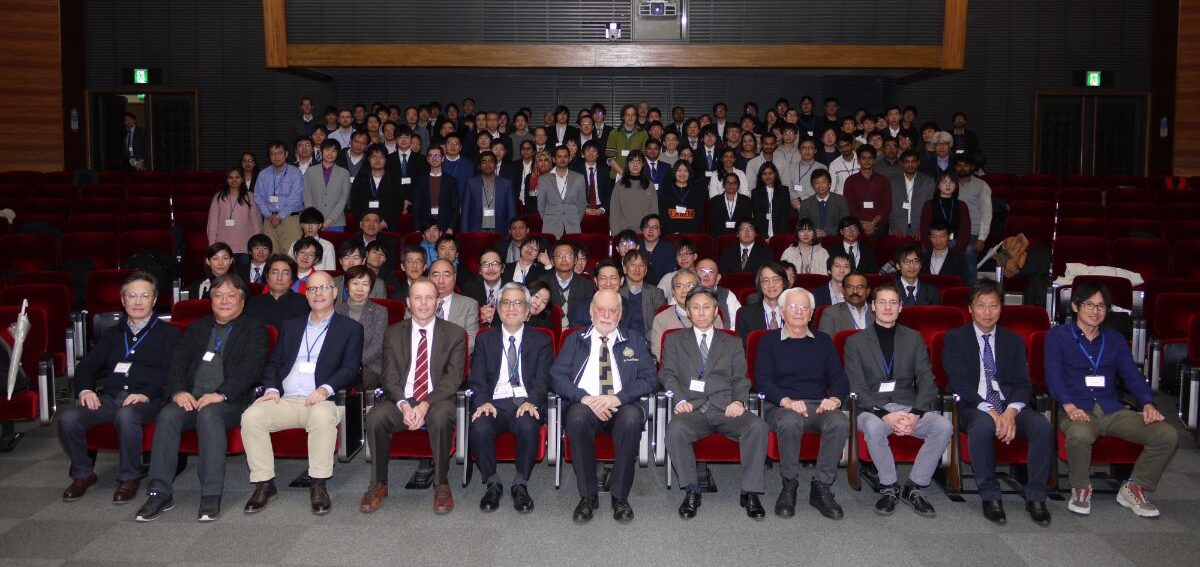
The 20th RIES-HOKUDAI International Symposium in 2019. J. Fraser Stoddart of Northwestern University, a Nobel Prize in Chemistry laureate, was invited as the plenary speaker (front row, sixth from left). (Photo: RIES)
Perpetuating contribution to science
Nakagaki : This year, RIES was granted the highest grade on the mid-term evaluation conducted by MEXT. We are proud of that and many of our other achievements. Certainly, we are expecting more to come.
Ijiro : With the diversity of our faculty members, of course each division has different goals and approaches. But in general, I hope that RIES will continue to contribute to the advancement of science and technology.
Biju : As a member of RIES, I hope we can combine fundamental science disciplines to understand the complexity of molecular assemblies, electronic materials, nanophotonics, and biological systems, aiming to solve challenging problems in life science, the energy sector, and the environment.
Nakagaki : Those fundamentals have been the core of our institute for almost 80 years since its establishment. I hope that we can continue the hard work of constructing novel research based on those pillars. I am curious to see what kind of new interdisciplinary approaches wait for us in the future.
*At the time of the interview, Prof. Nakagaki held the directorial position. Prof. Ijiro took over the position from April 1, 2021.
RIES official webpage: https://www.es.hokudai.ac.jp/english/
NIC@HU: http://nic.es.hokudai.ac.jp/index_e.html
Written by Aprilia Agatha Gunawan
